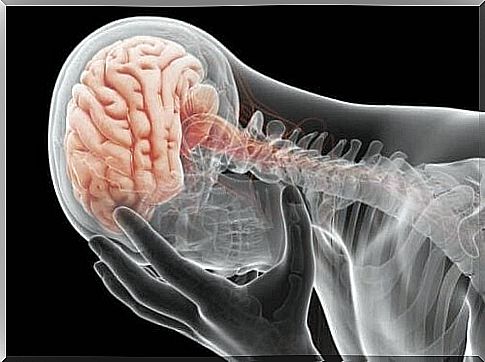Depression: The Chemical And Emotional Drift Of Our Brain

Depression is a continuous drift where the days go by slowly, where we have no more tears left although we want to cry, where we believe that we are slowly dying because in our brain, hope has died out and there is no longer a smile …
This feeling, so familiar to many, is created by a disturbance in our extremely complex and unique morale.
Depression is one of the main causes of disability today, a public health problem with major impact, according to the WHO (World Health Organization), which will increase considerably over the next few years.
Something is happening. While governments around the world are more focused on the numbers of the economy (mental health-related treatments can cost up to 4% of a country’s GDP), doctors and psychiatrists are emphasizing importance of prevention.
We know how to treat depression, but right now no one is able to prevent those vital moments where we just get carried away by this chemical and emotional drift in our brain.
We invite you to explore this interesting aspect of our health and well-being.

Depression, a silent symptom
Depression doesn’t happen overnight. Nobody chooses it from the start in their daily life, and nobody opts for this disconnection from the rumor of life, positive emotions, happiness.
It just happens little by little, slow, and unfortunately, until we plunge into a state of vulnerability, of pessimism and in the inability to be able to react.
Michael King, psychiatrist and professor in the Department of Mental Health Sciences at the University of London (UCL) is one of the makers of the famous PredictD test, which seeks to prevent the risk of depression.
This professor explains that currently, this disease is still very stigmatized.
As various studies reveal to us, it is estimated that almost 50% of depression disorders are not the subject of any treatment or at least not the most adapted to the specific needs of each patient.
All of this makes thousands of people adrift in a personal setting and thousands of people around the world prefer suicide to the pain of life. Or they simply limit themselves to facing life, relapsing once after another.

When the brain ceases to be in adequacy with life
According to certain more spiritualistic tendencies, we are all beings capable of “vibrating”.
We could say that each of us emits a determined internal music which, in turn, allows us to connect with our fellow human beings, with specific places, contexts and certain activities which are, in turn, on the same wavelength. that our personality …
This internal “melody” is the reflection of an active, passionate, curious brain …
When depression sets in, this ability to vibrate is extinguished, and it does so because the electrical flow to certain areas of the brain is reduced, slowing down.
We enter a semi-lethargic state where there are fewer neural connections, where there is a deep and delicate chemical drift from which it would be very difficult for us to emerge to reconnect with life.
We will then study this in detail.

The effects of depression on the brain “architecture”
It is important to point out that a depression is not exclusively created by an imbalance of our transmitters.
Genetic vulnerability, emotional factors or even medical problems can undoubtedly predispose its onset.
However, the effect this disorder has on our brains is remarkable. Let’s study it.
- The hippocampus: it is part of the limbic system and it is responsible for the process of memory and long-term recollection.
According to different studies, going through long periods of depression or chronic stress leads to the reduction in the size of this structure. We suffer from blackouts, difficulty concentrating …
- Depression, in turn, orchestrates a subtle and complex chemical chaos where acetylcholine, serotonin, norepinephrine, or dopamine go at odds with our emotional balance.
Because of this, we cannot get any sleep or feel the motivation for something or someone, to the point of literally feeling like the world has closed its doors to us.
- Another structure to take into account is the thalamus. This is a neural area that receives sensory information and in turn transmits it to the corresponding part of the cerebral cortex. Thanks to it, we control functions such as language or movement.
Patients with depression experience a certain slowness in moving and communicating with the ease and enthusiasm that previously characterized them. It is something very striking.

Depression is therefore a complex enemy that takes root in our brain and not where it hurts us the most: in the heart.
Thoughts become chaotic, disorderly and sad, to the point of falling into a psychic and emotional drift that can last for years.
Don’t let her do it, don’t give in, let yourself be helped, and above all, fight to reach the other side. Go back to wearing the shoes of hope and the glasses of optimism.









